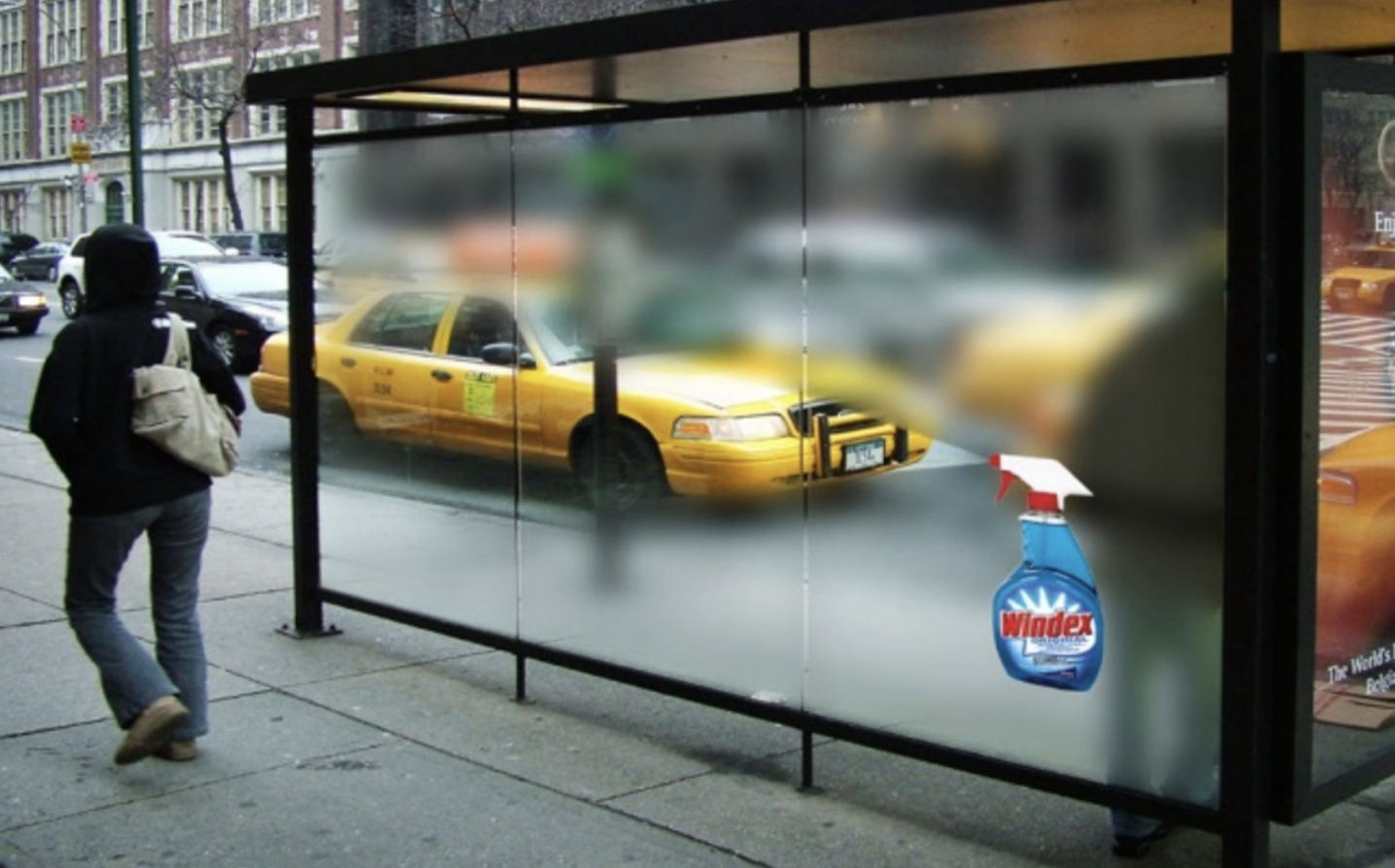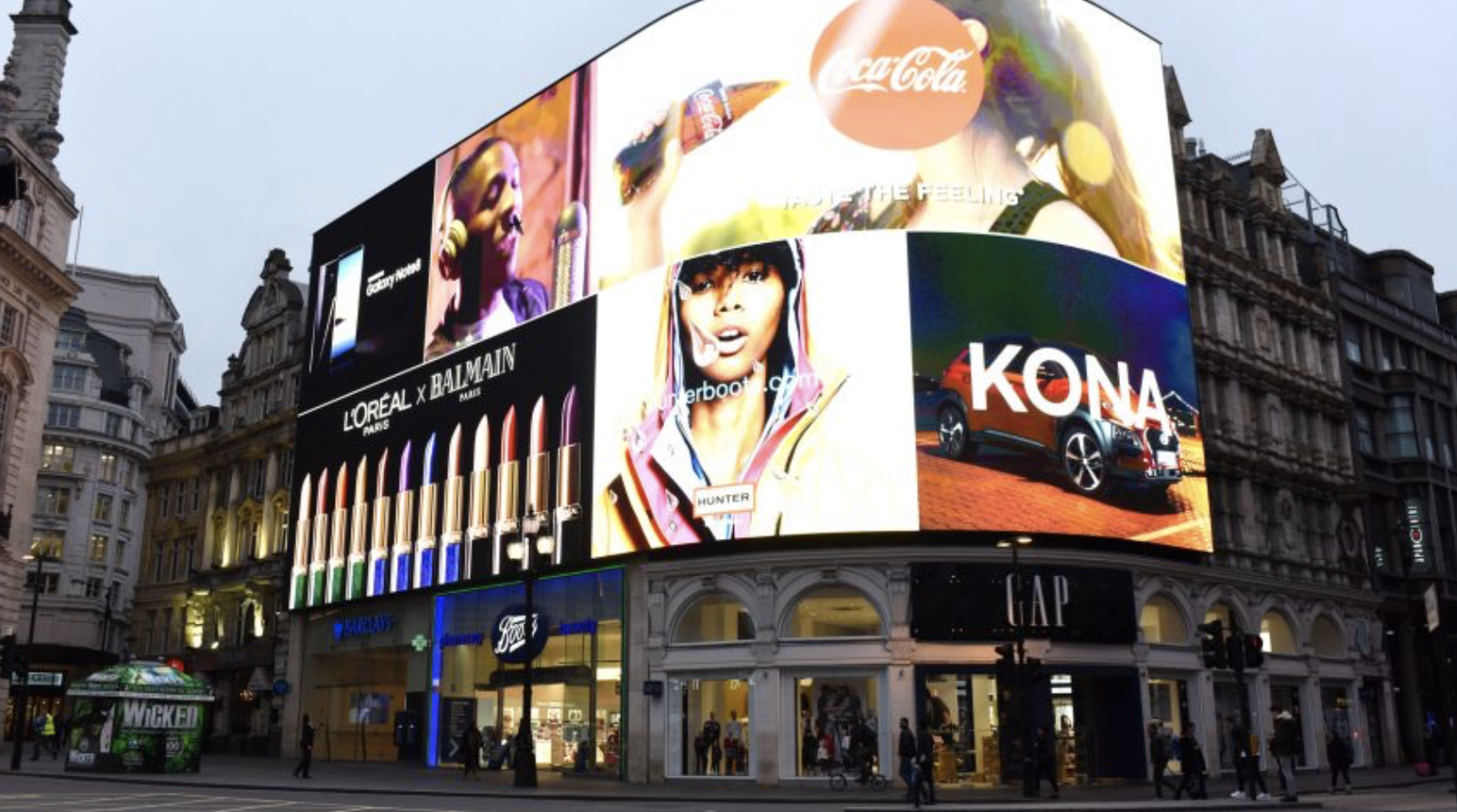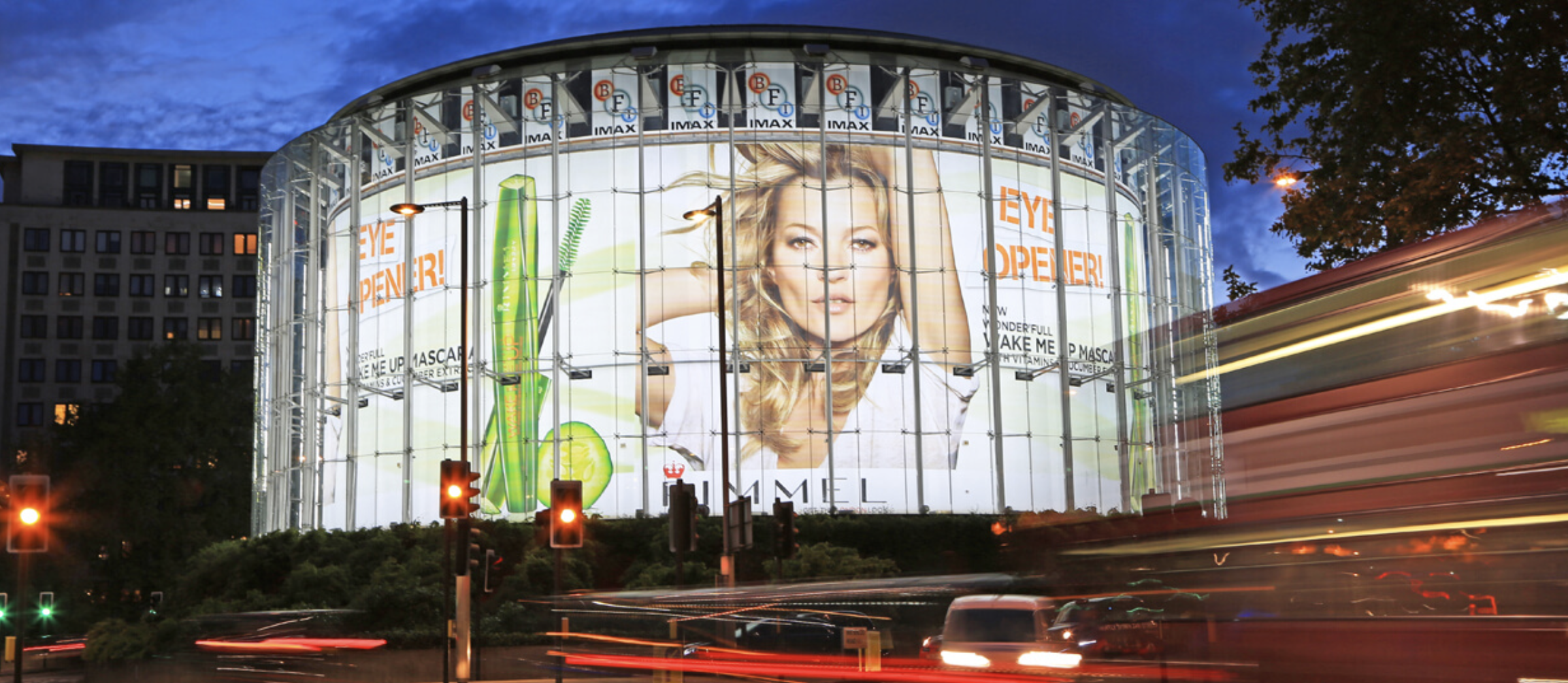
Out-of-home advertising or OOH has been around for a long time, and it got better over the years. It’s the best way to make yourself noticed and make people talk about your product. So what is it? OOH can be defined as any visual advertising media you see when you step out of your house. It includes billboards, signs, street furniture you can find in transit areas and ads on vehicles. It comes in so many formats, but you can distinguish them in two main: physical and digital OOH. What’s the difference between these two formats? Let’s explore the world of OOH advertising to find out!

How It Works
When walking down the street or driving on the highway, you notice billboards with colorful pictures and bold writing on them, trying to sell you something. It’s sometimes entertaining, other times, it’s annoying. In any case, you should know that they don’t erupt overnight, out of anywhere. There is a lot of work done behind the scenes, and I’m here to give you all the details about it. But first, you need to distinguish physical OOH from digital OOH.
Physical OOH
Physical OOH refers to any OOH that isn’t digital, such as posters, Traditional billboards, ads on benches, and the list goes on. Just know that it’s print instead of video. But ambient is also part of physical OOH, and it stands well on its own. For those who don’t know, ambient advertising is using unusual objects for advertising or putting up an ad at unexpected places, where you wouldn’t expect to see it. It’s an interesting advertising technique, because not only does it generate impressions, but it gives room to creativity as well. Whether it’s a pot of flower or at the laundry right across the street, there is no limit as to what advertisers can do to grab people’s attention. Another advantage of ambient is that it offers the opportunity for brands to show their uniqueness.
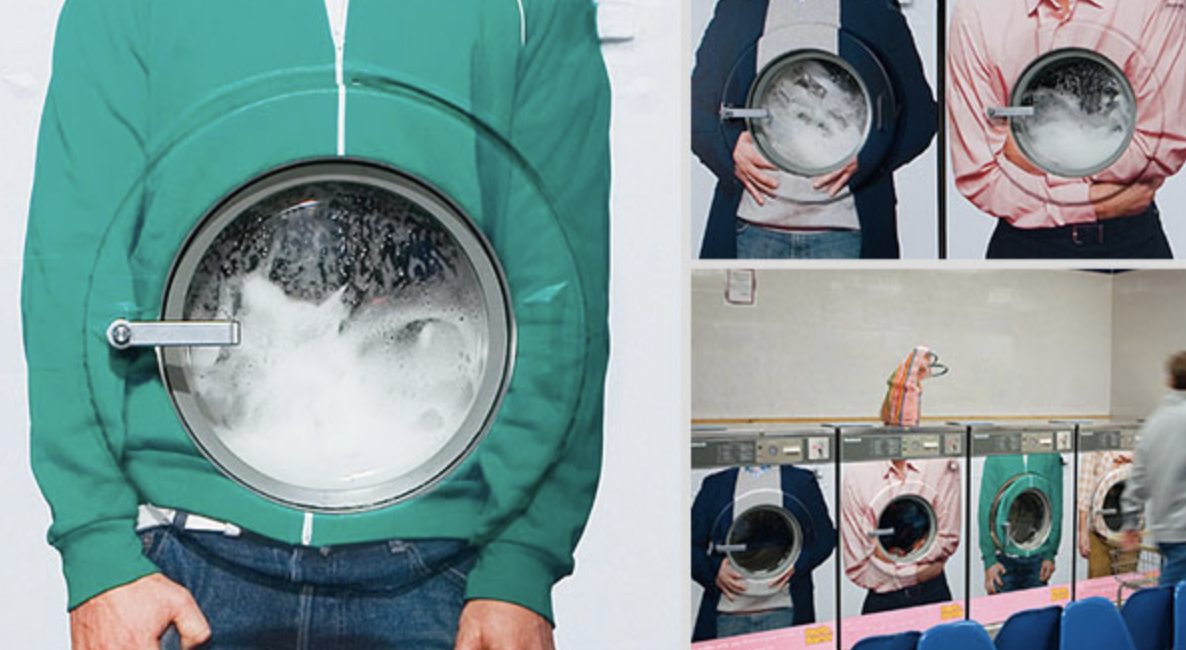
Consider this pot of flower, for example. It’s an ordinary street object; you’d walk past without even paying attention. However, the advertiser took advantage of the fact that it can be shaped like a mug. He then put it into context to enhance the main feature of the product they are advertising. And suddenly we have a weird, cute ambient you can’t help but notice or even smile at.
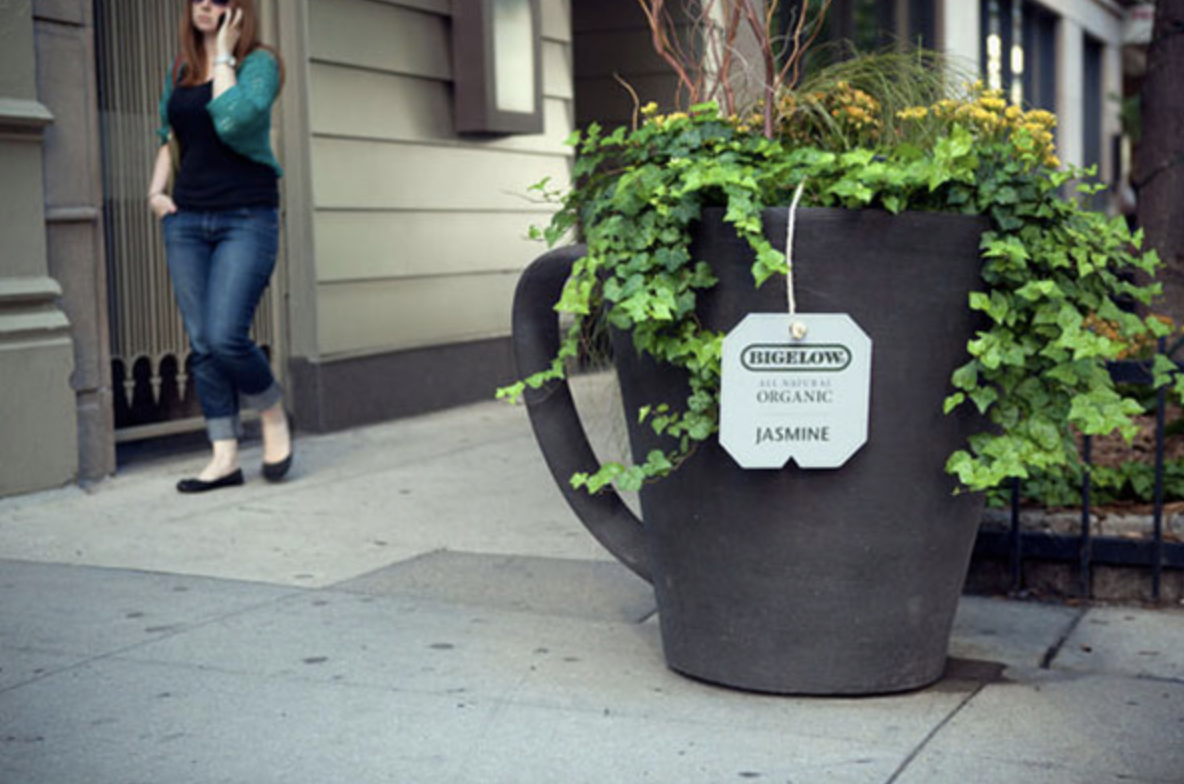
Traditional billboards became more popular with the rise of the automobile. With its capacity to display big words and images, advertisers had found the best way to catch drivers’ attention. However, it had evolved ever since. It’s not just for highways and the top of buildings anymore. In fact, billboards make 66% of the market now. How? Well, it’s more effective than other mediums in many ways, but we’ll elaborate on that later. Unlike ambients, all traditional billboards are put up following the same process: locate, rent, advertise. Of course, that’s only for those that are renting them. The owners would go through much less hassle to advertise on their billboards. Minus the rental process, every traditional billboard user has to go through many steps: the creative process, the designing, the printing, and finally put their ads on the billboard, for a limited amount of time.
Digital OOH
Digital OOH is the revolutionary version of traditional billboards and were developed more recently. Digital billboards, kiosks, transit can be considered part of it. As long as it has a digital screen, it can be considered a digital OOH. Now, some billboards will only show you the same content, over and over again, every X amount of seconds. Usually, X equals 8 seconds, but it depends on what the advertiser and the owner agreed upon. There are also interactive billboards, yes, you read it right. Digital billboards can be interactive as well. People with them directly, using the touchscreens to make transit tickets purchases, for example, research, or just interact with an ad. Some billboards also track movements, recognize sounds, objects or faces. Fascinating, isn’t it?
An example of an interactive ad is the campaign made by Kit Kat in Columbia to introduce their brand. The brand installed a billboard at a bus stop that would vibrate every time someone touched it. Its purpose was to massage to anyone who leaned on it. If you’re intrigued by this exciting campaign, you can see the video here.
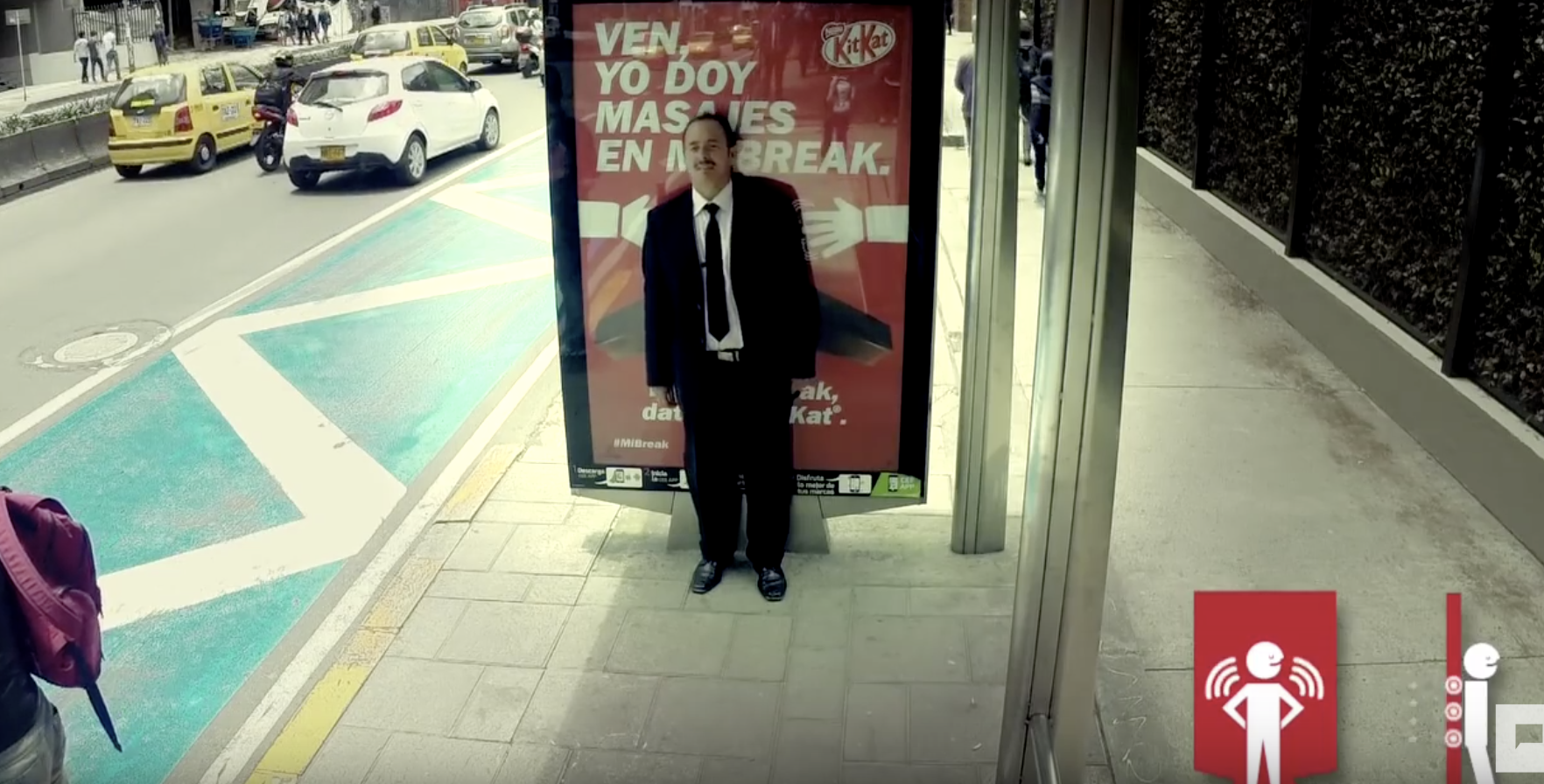
Another futuristic ad campaign was the one made by GMC. It was the the first digital billbaord to combine facial recognition and “dynamic displays to present personalized content in an out-of-home campaign.” The technology inside the billboard detected information such as facial expression, age, gender, how engaged the person in front of it was and displayed videos accordingly. It made it seem as though the person on the screen was directly engaging with the audience. You can see the video here.
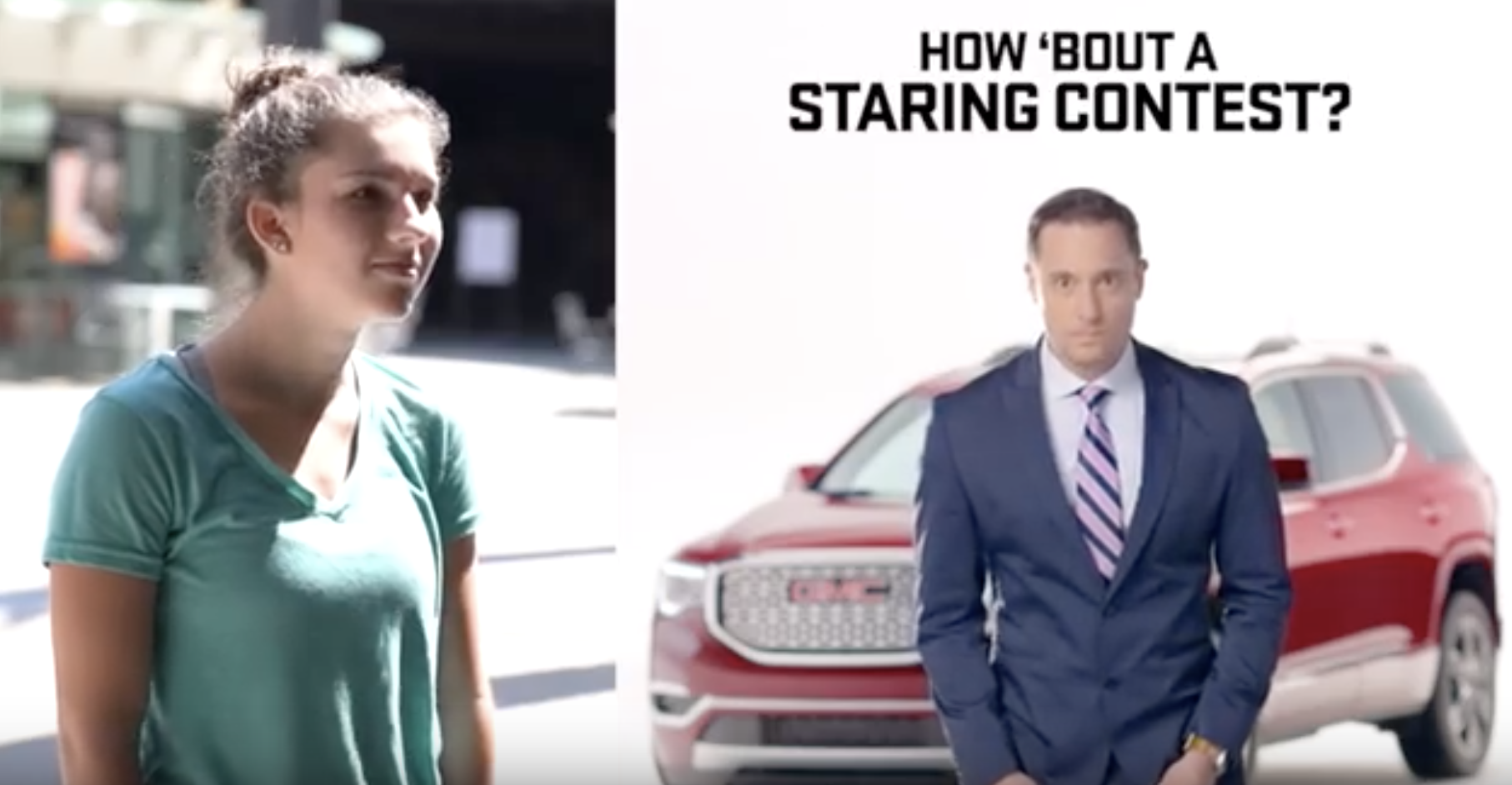
The Costs
Costs are the second most significant difference between physical and digital OOH. While one is more expansive than the other, it doesn’t make the less expensive option cheap either. Advertisers spend millions in OOH every year, especially on billboards. But keep in mind that it all depends on the location, the length, and the size of your campaign.
Costs of Physical OOH
Traditional billboard costs range between $250 and $14,000 per month. Such a huge gap, you say? Let’s say that traditional billboards are affordable for all budget. However, you have to keep in mind that if you want your advertising to make a significant impact, you have to invest. So, depending on the location of your billboard, if it’s a location that generates thousands or millions of impressions every day, you could find yourself paying over $10,000 per month. And these are only rental costs for one billboard. If you plan on renting more than one at a time, you will pay that amount multiplied by the number of billboards you’re renting. Designing and putting up your ad will generate more expanses. Printing your ad on vinyl, for example, could cost between $300 and $500 for a 14×48 foot billboard while designing it could cost you up to $1,000 per ad.
If you’re planning on building a billboard, then it’s a different story. There are many factors to take into account: are you building it on your land? On someone else’s? Are you using a steel structure? Are you using a wooden structure? How big will it be? How tall will it be? The total spending for the martial and construction fees could amount to $20,000 or more for a wooden structure billboard. For a steel-structured billboard, you’d spend up to $100,000 or more. Other costs to take into consideration include maintenance costs and land rental costs if you’re building your billboard on someone else’s land.
Costs of Digital OOH
There are locations where advertisers spend up to $3 million per month to put up an ad on a digital billboard: New York Time Square. Because of the unbelievable amount of impressions each ad makes on Time Square, renting a billboard there requires a lot of preparation. How long do you plan on advertising there? The most affordable billboards you’d get will cost you $1.1 to $4 million a year. You have to make sure that your budget can sustain such advertising expenses. Keep in mind though, that the costs aren’t that crazy, especially when you consider the impressions. You can get around 1.5 million impressions a day on your ads on Time Square, and 150 million a year.
In ordinary locations, however, you’d spend from $1,000 to over $15,000 a month to put up a digital billboard. Again, just like with traditional billboards, it all depends on the location. And whether you’re renting or owning. Building your digital billboard can cost you in total $154,000 or more. And let’s not forget the maintenance costs.
Pros and Cons
For both physical and digital OOH, there are pros and cons to consider before deciding which one to go for. But, even if you’re not a decision maker, it doesn’t hurt to know about them.
Pros of Physical OOH
- Lower cost: It’s a cheaper option, especially when renting.
- Availability: since they’ve been around the longest, there is a lot of supply, so it’s accessible.
- Exclusivity: Once you rent a billboard, it’s all yours, and it will have only your content on it, no sharing with anyone else.
- Room for creativity: you can be as creative as you want since specified dimensions do not limit you.
- Always works: physical OOH can never be subject to glitches or power outage, Once your ad is up, it stays so until you decide to put it down.
Cons of Physical OOH
- No flexibility: Once you decide on what to put on your billboard, you can’t change it as you please.
- Additional expenses: you’ll pay some fees for installation every time you change your ads.
Pros of Digital OOH
- Engagement: it’s easier to engage the audience with moving content and videos.
- Flexibility: you have the option to change the content whenever you want.
- Targeted: you can choose to show a certain content at a specific time of the day, for example, lunch specials promos at lunchtime.
- The audience can interact directly with your content.
- You have the option of displaying personalized content to the audience.
Cons of Digital OOH
- Higher costs: Digital OOH cost way more than their physical counterparts.
- Can let you down: it’s subject to glitches and can be affected by a power outage.
- Sharing: you may have to share your space with other advertisers.
Which One is Best?
I feel like you already know what I’m going to say, especially if you’ve read me before. But I’m going to tell it anyway: there is no right answer to this one, sorry. The reason for that is, what’s best for you may not be what’s best for someone else, or maybe it’s best for your needs at the time but not for your budget. You can still make the most of your ad, though. A good tip for advertisers with small budgets is to do an ambient ad. Nothing crazy, but something creative enough that people will talk about it. You never know, it could be the start of a great adventure.
References:
https://broadsign.com/blog/out-of-home-advertising/
https://economictimes.indiatimes.com/definition/ambient-advertising
https://thehustle.co/billboard-advertising
https://www.campaignlive.com/article/future-smart-billboards/1422247
https://fitsmallbusiness.com/how-much-does-billboard-advertising-cost/


